Pressure, Winds, Storms, and Cyclones
NCERT-Class-8-Science (Curiosity)-Chapter-6
Notes
Pressure :
Pressure : It is the force applied perpendicular to a surface, divided by the area over which that force is distributed.
This relationship can be expressed with the formula:
Pressure = \(\frac{Pressure}{Area}\)
If the area on which a force acts is increased, the pressure of the same force will be less.
Examples :
- Carrying a heavy bag with broad straps is more comfortable than with narrow straps because the broad straps spread the same force (weight) over a larger area, reducing pressure on the shoulders.
- In the same way, lifting a heavy bucket is easier with a broad handle, as it lowers the pressure on the hand and causes less pain or discomfort.
Unit : The SI unit of force is Newton and that of area is metre2. Therefore, SI unit of pressure is newton/metre2 (N/m2). This unit is called pascal denoted by pa.
Example : When we apply force of 100 N on a cardboard of area 2 m2, then the pressure applied on the cardboard is:
Pressure = \(\frac{Pressure}{Area}\) = \(\frac{100}{2}\) = 50 N/m2
If pressure increases when the area of contact decreases.
For example,
- A nail goes easily into wood with its sharp point but not with its flat head.
- A knife cuts an apple easily with its sharp edge but not with a blunt one.
In both cases, the same force acts on a smaller area, creating greater pressure. Thus, for a given force, smaller area means higher pressure.
Pressure and Area: When a force is applied over a small area, it creates more pressure. This rule works for solids, liquids, and gases.
Liquids also exert pressure :
- The pressure exerted by the liquids increases with the height of the liquid column.
- The pressure is exerted by the liquids not only on the bottom but also on the walls of the container. In fact, liquids exert pressure in all directions.
In a container, the pressure from a liquid depends on how tall the liquid column is—not on how much liquid there is or how wide the container is.
Water Pipe Experiment:
- Two pipes with different widths are filled with water to the same height.
- Balloons tied at the bottom of both pipes bulge equally.
- This shows that pressure is the same because the height of water is the same.
- If you add more water and increase the height, the pressure increases, and balloons bulge more.
Real-Life Applications :
- Water Tanks: Placed high above buildings so that the tall water column creates strong pressure at the taps below.
- Dams: Water pressure increases with depth. The bottom of a dam is made wider to handle the strong pressure from deep water.
Why This Matters :
Understanding how pressure works in liquids helps us learn about air pressure in the atmosphere, which is less visible but very important in weather, breathing, and flying.
Pressure Exerted by Air :
- Air Around Us: Earth is surrounded by a thick layer of gases called the atmosphere, mostly made of nitrogen and oxygen.
- Air Has Weight: Even though air is invisible, it has mass and is pulled down by gravity.
- Pressure from Air: The air above us pushes down on everything. This push or force over an area is called atmospheric pressure.
Experiment to Show Air Pressure :
- Take a paper plate with a stick in the center and place it on a table.
- Cover it with a folded chart paper and try lifting it using the stick.
- Now replace it with a large, unfolded chart paper and try again.
- You’ll need more force to lift the plate with the larger paper.
- Why? Because more surface area means more air pressure acting on it.
Rubber Sucker Example :
- Press a rubber sucker onto a smooth surface.
- Air gets pushed out from under it, creating low pressure inside.
- The higher pressure outside holds it tightly in place.
- You need a strong pull to remove it—this shows how powerful air pressure is!
How Strong Is Air Pressure?
- Over a small area like 15 cm × 15 cm, air pushes with a force of about 2250 newtons. That’s like the weight of a 225 kg object!
Why Aren’t We Crushed by Air Pressure?
- Our bodies have internal pressure from fluids and gases.
- This balances the pressure from outside air.
- So, we stay safe and don’t feel crushed.
Formation of Wind :
- Air pressure is not the same everywhere.
- These differences cause air to move from high-pressure areas to low-pressure areas. This movement of air is what we call wind.
Genesis of Wind:
- Wind is just air in motion, caused by differences in air pressure.
- Basic Rule:
Air always moves from a high-pressure area to a low-pressure area.
Balloon Experiment to Show Wind Formation :
Take two balloons and a straw:
- One balloon is inflated (high pressure).
- The other is empty (low pressure).
- Connect them with a straw.
- Air flows from the inflated balloon to the empty one until both have equal pressure.
This shows how wind moves in nature—from high to low pressure.
How Wind Forms in Nature :
(i) Daytime: Sea Breeze
- As the land gets heated faster than the water during the day, the air above
- the land becomes warmer and lighter to rise up thus creating an area of low pressure.
- The air from the high-pressure region above the sea blows to the low-pressure region (developed over the land). It results in sea breeze.
(ii) Nighttime: Land Breeze
- At night, the water is warmer than the land, thus a low-pressure area develops above the sea.
- The wind blows from the land to the sea, giving rise to land breeze.
Wind Speed and Pressure Difference :
- Greater pressure difference = stronger wind.
- This principle helps explain:
- Local breezes
- Storms
- Wind behavior around buildings and structures
High-Speed Winds Result in Lowering of Air Pressure :
Aerodynamic Effects of High-Speed Winds :
Key Principle: Fast-moving air creates low pressure. This is a basic rule in aerodynamics and helps explain how wind affects buildings.
Balloon Experiment to Show Low Pressure
- Hang two balloons a few centimeters apart.
- Blow air quickly between them.
- Instead of moving apart, the balloons move closer.
- Why? Because fast air creates low pressure between them.
- The higher pressure outside pushes them inward.
How Wind Can Blow Off Roofs :
- High-speed wind blows over the roof → creates low pressure above.
- Inside the house, air pressure stays normal (higher).
- This difference causes an upward force from inside.
- If strong enough, the roof can be lifted off and blown away.
Safety Tip During Storms :
- Keep doors and windows open during high winds.
- This allows air to flow through the house, balancing pressure.
- It helps prevent roof damage by reducing the upward force.
Why This Matters :
- This principle is important in storm safety and building design.
- It also explains how wind speed and pressure are connected in real-world weather systems.
Storms, Thunderstorms, and Lightning :
Storms and Thunderstorms:
- A storm is a weather event with strong winds and precipitation (rain, hail, or snow).
- A thunderstorm is a more powerful type of storm with electric charges (lightning and thunder).
- Both are caused by heat and moisture, which make air rise and create atmospheric instability.
Steps in Storm Formation :
- Uplift: When the land gets very hot, the warm, moist air above it becomes light and rises, creating a low-pressure area.
- Inflow: Cool, heavy air from nearby high-pressure areas moves in to replace the rising warm air, forming a cycle of wind movement.
- Condensation: As the warm air rises, it cools and the water vapor in it changes into tiny droplets, forming clouds.
- Precipitation: The droplets join together and become heavy, falling as rain, hail, or snow. When strong winds occur with this rainfall, it is called a storm.
Thunderstorm Formation :
- Heating of the Earth’s surface: The Sun heats the land, and the warm air near the ground becomes lighter.
- Rising of warm, moist air: This warm, moist air rises upward into cooler regions of the atmosphere.
- Cooling and condensation: As the air rises, it cools and the water vapor condenses to form cumulonimbus clouds (large, tall thunderclouds).
- Formation of lightning and thunder: Inside these clouds, strong air movements cause electric charges to build up. When the difference in charge becomes large, lightning occurs, followed by thunder.
- Rain and wind: The condensed water droplets fall as rain, and the fast-moving air causes gusty winds.
Lightning Formation :
- Charge Separation: Inside a storm cloud, strong winds make ice particles move up and water droplets fall down. When they rub against each other, they produce electric charges. The lighter ice particles become positively charged and move to the top of the cloud, while the heavier water droplets collect negative charges and stay near the bottom.
- Induction: The negatively charged bottom of the cloud causes the ground and objects below it (like trees and buildings) to become positively charged.
- Electrical Discharge: When the difference between these charges becomes too large, the air can no longer stop them from meeting. A sudden flow of electricity occurs, creating a bright flash called lightning.
- This can happen inside a cloud, between clouds, or between a cloud and the ground.
Thunder: Lightning heats the air around it very quickly, making the air expand and create a loud sound called thunder.
Dangers and Safety Tips:
- Stay away from tall objects like trees.
- In open areas, crouch down in a low spot (don’t lie flat).
- Avoid using umbrellas with metal rods.
- Get out of water bodies like pools or lakes.
- Sitting inside a car or bus is relatively safe.
Lightning Conductor:
To protect buildings, a lightning conductor (a metal rod fixed on the top and connected to the ground) provides a safe path for the electric charge to travel into the earth.
Cyclone :
Cyclone Formation :
A cyclone is a large, powerful spinning storm that forms over warm ocean water. It gets its energy from the heat and moisture of the sea, producing strong winds and heavy rain.
- Initiation: The sun heats the ocean, making the warm, moist air above it rise and create a low-pressure area.
- Fueling: As the air rises and cools, water vapor condenses into raindrops. This releases heat into the air.
- Intensification: The released heat makes the air rise faster, lowering the pressure even more and strengthening the system.
- Rotation: Air from surrounding high-pressure areas rushes toward the low-pressure center. Due to Earth’s rotation, this air starts spinning.
- Maturity: The cyclone becomes a well-organized system with strong rotating winds around a calm central area called the eye. The eyewall around it has the heaviest rain and strongest winds.
Effects of a Cyclone:
- Strong Winds: Can destroy houses, trees, and power lines.
- Storm Surge: Powerful winds push seawater toward the land, causing severe coastal flooding.
- Heavy Rain: Leads to floods and landslides.
- Aftereffects: Contaminated water, damaged crops, blocked roads, and power cuts.
Dissipation:
- When a cyclone moves over land, it weakens because it loses contact with warm ocean water, its main energy source.
Importance of Forecasting:
- Modern satellites and agencies like the India Meteorological Department (IMD) help track cyclones early.
- Their forecasts and warnings help save lives and reduce damage.
Safety Tips:
- People living in cyclone prone areas should keep an emergency kit ready with essential items.
- During a cyclone, move to a nearby designated cyclone shelter without wasting any time.
Glossary of Key Terms :
| Term | Definition |
| Atmosphere | The envelope of air surrounding the Earth, containing nitrogen, oxygen, argon, carbon dioxide, and other gases. |
| Atmospheric Pressure | The pressure exerted by the air around us. |
| Cyclone | A large, spinning system of clouds, winds, and rain that forms over warm ocean waters, characterized by a very low-pressure area at its center. |
| Eye of the Cyclone | The region of lowest pressure at the center of a cyclone where the wind is calm. |
| Hectopascal (hPa) | A practical unit of air pressure equal to 100 pascals (Pa). |
| Lightning | A bright flash of light produced by a sudden flow of electric charges, which can occur within a cloud, between clouds, or between clouds and the ground. |
| Lightning Conductor | A metallic rod installed on buildings that provides an easy path for the transfer of electric charges from lightning into the ground, protecting the structure. |
| Millibar (mb) | A practical unit of air pressure equal to 100 pascals (Pa). |
| Pascal (Pa) | The SI unit of pressure, equivalent to one newton per square meter (N/m²). |
| Pressure | The force exerted per unit area. It is calculated by the formula: Pressure = Force / Area. |
| Storm | Strong winds accompanied by rain, hail, or snow. |
| Thunder | The loud sound produced when lightning rapidly heats the air around it, causing the air to expand suddenly. |
| Thunderstorm | A storm accompanied by lightning and thunder. |
Key Features of Kitabcd Exam Master :
|
Click on below links to get PDF from store
PDF : Class 8 -Curiosity-Chapter-6-Pressure, Winds, Storms, and Cyclones– Notes
PDF : Class 8 -Curiosity-Chapter-6-Pressure, Winds, Storms, and Cyclones– Exam Master
Main Page : NCERT-Class-8-Science (Curiosity) – All chapters notes, solutions, videos, test, pdf.
Previous Chapter : Chapter-5- Exploring Forces – Online Notes
Next Chapter : Chapter-7- Particulate Nature of Matter – Online Notes

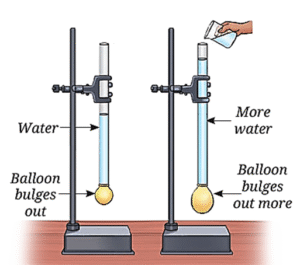
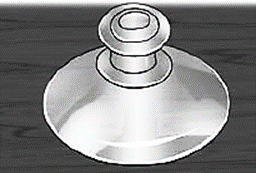
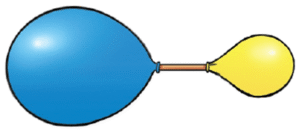
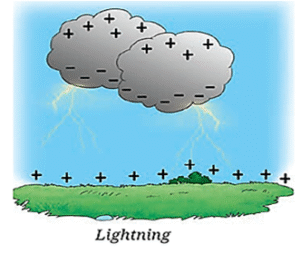
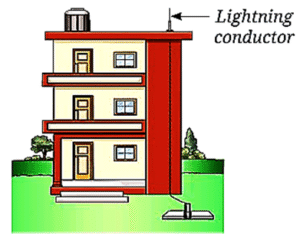
We reply to valid query.